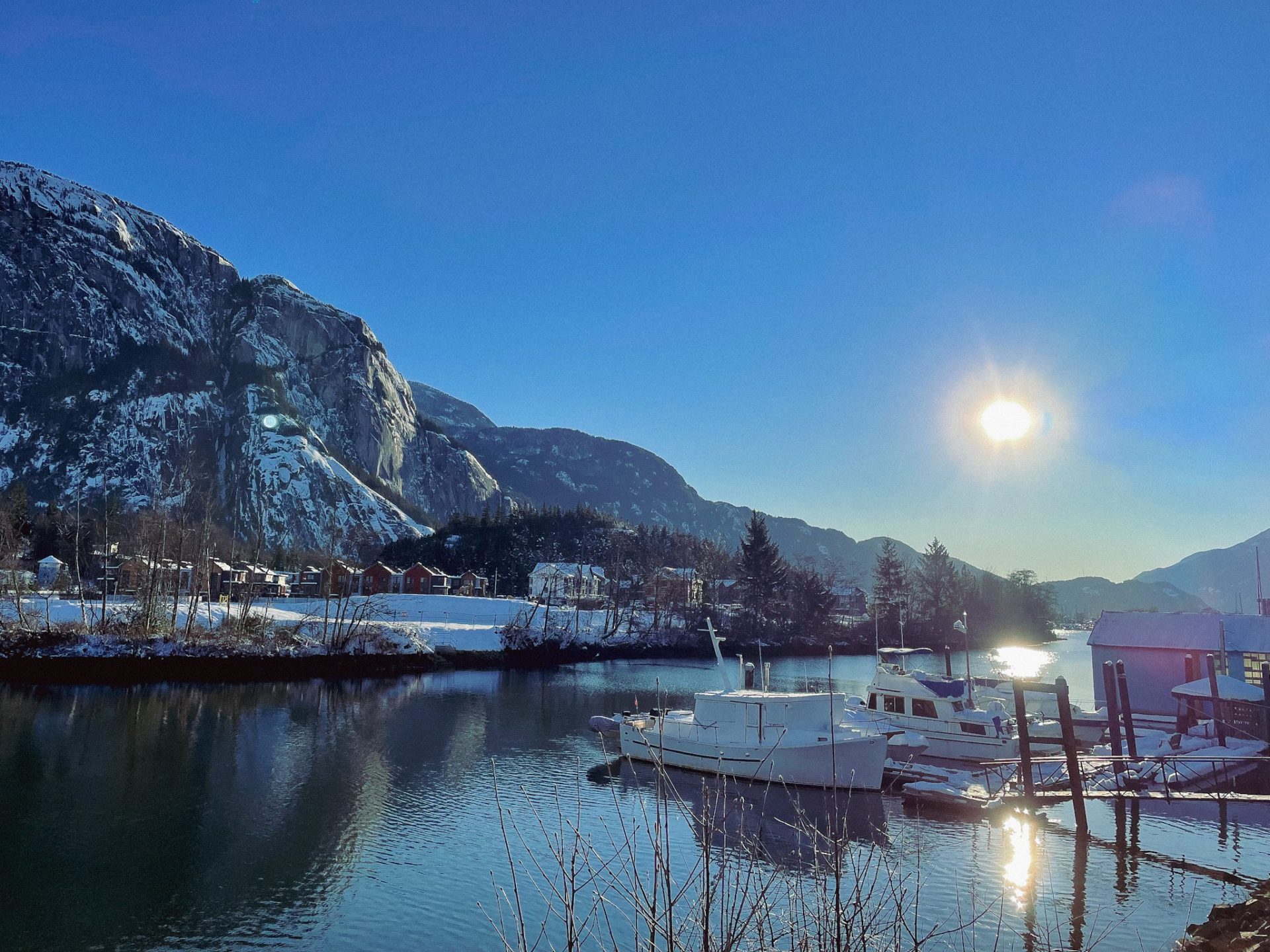Now is the time for residents to seize their chance to shape Squamish’s waterfront access before it’s too late.
The District of Squamish is currently conducting a Marine Access Review study making way for user groups to add input in the coming weeks. It is an opportunity that shouldn’t be missed, as the future of many of Squamish’s water recreation facilities are up in the air.
The most recent to raise its ugly head being the community’s only boat launch. In November, Doug Lowe created a petition – Squamish Community Needs A Better Boat Launch – to address the urgent situation. It’s not a new story, as it’s been long-known that Squamish’s yacht club and boat launch sit on borrowed time. Both are located on a private landowner’s parcel.
Besides the facility’s shaky future, the condition of the boat launch presents dangers, the petition notes. The ramp is in bad shape, and there is no dock to tie a boat to once it’s in the water.
“Squamish is ‘hardwired for adventure’ so let’s make this happen,” the petition states.
The landowner hosting the boat ramp and leasing space to the Yacht Club appears to have no short- to medium-term plans for development, says Coun. Eric Andersen, who has a keen interest in Squamish’s waterfront industries. While there may be opportunities for interim arrangements to enhance the facility, community groups, like the Squamish Needs a Boat Launch Committee, need to come to the table now.
“For paddle and windsports, I would strongly recommend working together to advocate access interests,” Andersen says.
The oceanfront’s 11-acre Spakwus Feather park is slated to have a ramp for non-motorized vessels. A ramp for motorboats was investigated, cost and included in a 2009 report for the Squamish Oceanfront Development Corporation (SODC) – a wholly-owned municipal corporation that sold the land for development.
“It was not pursued further by the later purchasers of the Oceanfront (SODC) property, likely because of the parking space that would be needed and the high value of the land for other uses,” Andersen says.
This shortfall should serve as a lesson. In 2018, the District of Squamish adopted its Marine Action Strategy. If the strategy was completed before the Waterfront Landing Sub Area Plans – as recommended by municipal staff in 2008 – the outcome may have been different.
“We have needed a wholistic picture of the waterfront needs, constraints and opportunities for a long time, in order that we can plan pro-actively before the waterfront is rezoned to other uses,” Andersen says.
That said, the strategy did little to help the Squamish Spit’s largest user group. Far from a collaborative process championed by the strategy, Squamish’s wind sport users now find themselves scrambling to rebuild water access for the benefit of the community and B.C. tourism.
The watersports designation of one of the beaches at the new Spakwus Feather Park may have created a disservice to wind sport users during their search for a solution. Its title led people to believe there was an alternative to the Squamish Spit. However, the new park is woefully inadequate for this user group. The beach itself will be set apart from parking, which presents accessibility issues for those with physical challenges. And then there’s the issue of cramping all the different recreational equipment, with their varying setups, into one area – for example, kiteboard lines are approximately 24 metres long.
At the park design unveiling in 2018, then director of the Squamish Windsports Society, Jamie Martin noted the park was not designed with the intention of replacing the Squamish Spit.
“The Spit will still be the Number 1 spot,” he was quoted as saying.
Today we know this isn’t the case, and the new park could very possibly be forced to accommodate the 100 plus daily users that the Spit saw on any given weekend. Moving forward, it will be important for the wind sports community to inform the council and the public about its tourism economy contributions, Andersen says.
“The potential loss of the training berm spit is a huge setback – no question. There will be no easy answers for alternative access and facilities, and there will be new demands on collaboration with all waterfront stakeholders to find solutions.”
Squamish needs to approach its waterfront with a broader vision, Andersen continues. He would like to see the community become a gateway for ferry and tourist charter vessels.
“It is very important to consider the whole picture, due to the constraints of our rare, but limited waterfront. WLNG construction and Future employee transit, future ferry and seaplane terminals, and commercial barge transport docks are also part of the picture of necessary collaborative planning, for the short-term and longer-term.”
With the ever-growing pressure of development it’s important Squamish has this picture in place before it’s too late. It’s always easier to create water access in the beginning then to fight for it later.
“There is a popular notion that Squamish will now gain access to the waterfront, with the departure of waterfront industry,” Andersen says. “Let’s be careful! We may actually be losing access to the water, with waterfront housing development.”





